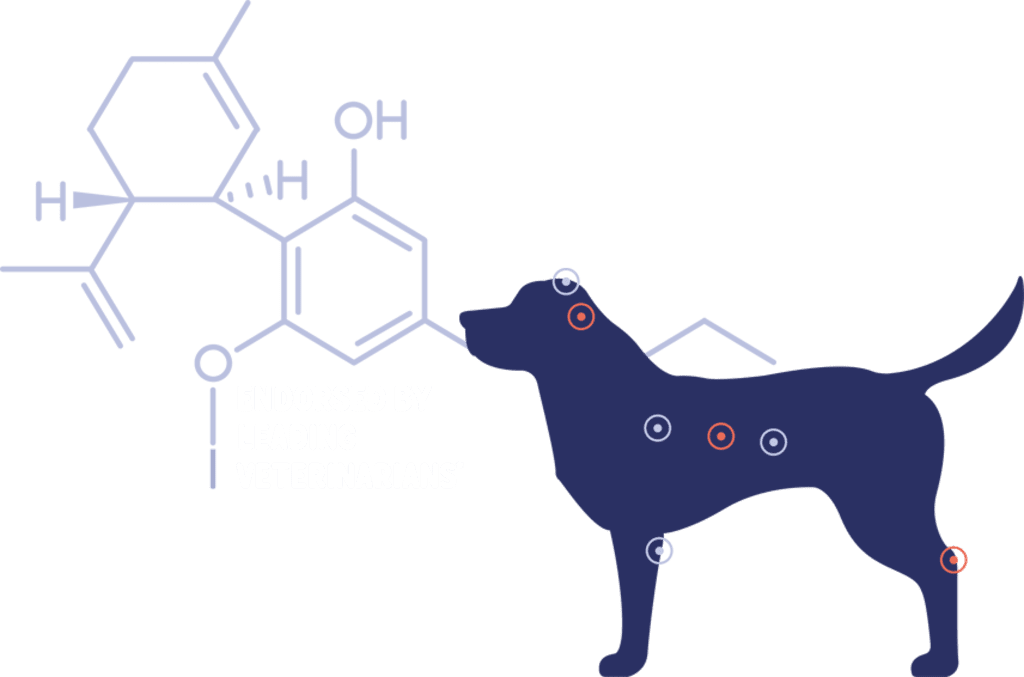
If your dog is experiencing diarrhea or digestive issues, your veterinarian may recommend metronidazole, a widely used antibiotic for pets. While not officially FDA-approved for dogs, metronidazole is commonly prescribed to treat bacterial and protozoal infections, as well as conditions like inflammatory bowel disease.
However, this medication can cause side effects and should only be used under veterinary supervision. In this article, you’ll learn everything you need to know about metronidazole for dogs, including its uses, safe dosage, potential side effects, and important precautions to keep your pet healthy and comfortable
- What Is Metronidazole for Dogs?
- What Is Metronidazole Used for In Dogs?
- How Metronidazole Works In Dogs?
- How Long Does It Take for Metronidazole to Work?
- Is Metronidazole Safe for Dogs?
- When Can You Use Metronidazole for Dogs
- How Is Metronidazole Given to Dogs?
- Metronidazole Dosage for Dogs
- What to Do If You Miss a Dose?
- What to Do in the Case of a Metronidazole Overdose?
- Cost of Metronidazole for Dogs
- Metronidazole Storage for Dogs
- Metronidazole for Dogs Side Effects
- When Should You Avoid Using Metronidazole for Dogs?
- Drug Interactions between Metronidazole and Other Medications
- Precautions to Take
- Guidelines for Safe Usage of Metronidazole for Dogs
- Alternatives to Metronidazole for Dogs with Diarrhea
- Are Medications Always Necessary to Treat Diarrhea In Dogs?
What Is Metronidazole for Dogs?
Metronidazole is an antibiotic often recommended by veterinarians to address various bacterial and parasitic infections in dogs. It’s effective against anaerobic bacteria and protozoa, common culprits behind stomach and intestinal issues.
This antibiotic is primarily used to treat inflammation in the large intestine, particularly for managing diarrhea. It’s also used for various illnesses and conditions in dogs, horses, and cats.
Metronidazole for dogs requires a prescription and can be administered orally or topically. While the U.S. Food and Drug Administration hasn’t officially approved metronidazole for veterinary use, vets frequently prescribe it for their canine patients.
Many parasites and bacteria affecting humans also impact pets. This makes metronidazole a valuable treatment option for them. Metronidazole for dogs is available in different brand names, like,
- Flagyl
- Protostat
- Metizol
- Metrogel
Usually, metronidazole is administered orally in tablet, capsule, or liquid suspension forms. It’s also accessible as a topical gel or ointment. In hospitals, an injectable form might be used.
What Is Metronidazole Used for In Dogs?
Metronidazole is commonly used in veterinary medicine for various conditions in dogs. It is an antibiotic that is effective against specific kinds of bacteria and some protozoal infections. Here are some common uses of metronidazole for dogs:
1. Giardiasis
Metronidazole is often prescribed to treat Giardiasis. It is an intestinal infection caused by the protozoan Giardia.
2. Anaerobic bacterial infections
It is effective against anaerobic bacteria. These bacteria thrive in environments without oxygen. Metronidazole can be employed to treat infections such as periodontal disease, infections of the gastrointestinal tract, and certain skin infections.
3. Inflammatory bowel disease (IBD)
Metronidazole may be used as part of the treatment protocol for dogs with inflammatory bowel disease to help reduce inflammation and control symptoms.
4. Dental infections
This medicine is sometimes prescribed to treat dental infections, particularly in cases where anaerobic bacteria are involved.
5. Protozoal infections
Besides giardiasis, metronidazole is also useful for treating other protozoal infections, such as trichomoniasis.
It’s important to use metronidazole under veterinary supervision, as it has many side effects.
How Metronidazole Works In Dogs?

Metronidazole works by disrupting the DNA of infecting organisms, preventing their growth. It’s unique in its ability to treat central nervous system infections as it can cross the blood-brain barrier.
For a dog’s body to function well, good circulation and oxygen are vital. Damaged tissue often has poor oxygen circulation, creating environments where only certain pathogens that don’t need oxygen can survive.
Metronidazole stops repair enzymes in cells found in these oxygen-deprived (anaerobic) areas. This leads to the death of bacterial cells.
How Long Does It Take for Metronidazole to Work?
Typically, metronidazole begins to show effects within a few days. However, this timeline can vary depending on the specific situation.
In cases of severe infections, it may take 48 to 72 hours before observing changes in the dog’s symptoms.
Importantly, even if your dog appears to recover quickly, there might still be lingering bacteria that could lead to a relapse. So, it is important to complete the full course of metronidazole.
Is Metronidazole Safe for Dogs?
Metronidazole is generally safe and effective when administered correctly under veterinary supervision.
However, due to the increasing antimicrobial resistance, some veterinarians are opting to use metronidazole less frequently.
Also this medication can also cause many side effects, so it is important to monitor your dog.
When Can You Use Metronidazole for Dogs

Metronidazole should only be administered to dogs as directed by a veterinarian. Due to concerns regarding overuse and antimicrobial resistance, it’s vital to use metronidazole exclusively under veterinary guidance. Never attempt to use it on your own as an over-the-counter drug.
How Is Metronidazole Given to Dogs?
When administering metronidazole at home, it typically comes in the form of oral tablets or capsules. Because it may taste bitter, you can try hiding it in peanut butter or another favorite treat.
Alternatively, many veterinary clinics offer a liquid form of metronidazole. This can be easier for dogs to swallow if they have trouble with pills.
Metronidazole fully absorbs within 1 to 2 hours, but it might take a few days before your dog’s symptoms improve. Even if your dog seems better, make sure they finish all prescribed pills unless instructed otherwise by your vet.
Metronidazole Dosage for Dogs
Metronidazole for dogs dosage is determined by your dog’s weight and the cause of their infection.
- Typically, veterinarians prescribe around 5 mg per pound of body weight.
- Dogs usually take the medication twice daily for 5 to 7 days.
It’s important to note that the dosage your vet recommends may vary based on several factors. Your vet will adjust metronidazole for dogs dosage and duration of treatment based on your dog’s response to the medication.
What to Do If You Miss a Dose?
If you forget to give your pet a dose, you can administer it as quickly as you recall. If it’s close to the next scheduled dose, stick to the regular schedule and do not double up on doses and If you’re unsure, contact your veterinarian for guidance and follow their instructions.
What to Do in the Case of a Metronidazole Overdose?

If you notice signs of an overdose of metronidazole in your pet, seek veterinary assistance promptly. Here are some symptoms to look out for when using metronidazole for diarrhea in dogs,
- Lack of appetite
- Vomiting
- Depression
- Unsteadiness
- Confusion
- Seizures
Neurological symptoms are more likely to occur in animals on long-term moderate or high doses. This is when the dosage typically exceeds 33 mg/pound/day.
Signs of chronic toxicity may appear around 7 to 12 days after starting treatment. It may take several days to two weeks for these symptoms to lessen after stopping the medication.
If you suspect an overdose, contact your veterinarian instantly. If your pet has ingested metronidazole accidentally, contact the Animal Poison Control Center.
Cost of Metronidazole for Dogs
The cost of metronidazole for diarrhea in dogs can vary depending on factors like dosage, brand, and where you purchase it. Generally, a bottle of metronidazole tablets or liquid can range from $10 to $50.
The price may be higher if you buy it from a veterinary clinic compared to purchasing it from a pharmacy or online retailer. Some factors influencing cost include the size of the dog and the duration of treatment. Now here side effect and benefits to know for benadryl dosage for dogs.
It’s essential to consult a veterinarian to determine the correct dosage and duration of treatment, as well as to discuss any potential side effects or interactions.
Metronidazole Storage for Dogs
Here are the instructions you need to follow safely store metronidazole for dogs:
- Store metronidazole for dogs at temperatures between 59°F to 77°F.
- Check the label for specific storage instructions.
- Ensure the container has a tight seal to protect it from both light and moisture.
- Follow the storage directions provided by the pharmacy.
- Keep metronidazole out of your children’s and pets’ reach.
Metronidazole for Dogs Side Effects

Common Side Effects
Metronidazole can decrease the number of good bacteria in a dog’s gut, leading to increased diarrhea.
Its bitter taste might make the dog drool more than usual. Here are some common metronidazole for dogs side effects:
- Nausea
- Diarrhea
- Vomiting
- Gagging/regurgitation
- Drooling
- Fatigue
- Loss of appetite
- Discolored urine
- Fever
Life-Threatening Side Effects
Life-threatening metronidazole for dogs side effects are rare but possible, especially when you administer the medication in high doses or for long periods.
Seek immediate veterinary attention if you observe the following:
- Hives
- Rapid heart rate
- Difficulty breathing
- Depression or lethargy
- Difficulty walking
- Dilated pupils
- Rapid eye movements
- Twitching or seizures
- Paralysis in all four legs
If your dog shows any of these signs, contact a vet immediately, as allergic reactions can be dangerous or even life-threatening.
Side Effects from Overdose
Dogs given too much metronidazole or treated with it for extended periods may require urgent veterinary care if they experience:
- Irregular or unusually slow heartbeat
- Tremors
- Seizures
- Stiffness or muscle spasms
- Dilated pupils or eye twitching
When Should You Avoid Using Metronidazole for Dogs?
You should avoid Metronidazole for diarrhea in dogs in the following cases:
- Dogs with liver problems or dysfunction.
- Dogs are allergic to the medication.
- Pregnant or nursing dogs.
- Dogs taking medications containing calcineurin inhibitors like – tacrolimus and cyclosporine.
Dog owners should always discuss all medications and supplements their dog is taking to prevent any adverse effects from metronidazole.
Drug Interactions between Metronidazole and Other Medications
Different medications can interact with metronidazole, so it’s important to inform your vet about all medications and supplements your dog is taking before starting this antibiotic.
- Metronidazole can interact with the blood thinner warfarin (Coumadin), increasing the risk of bleeding. If your dog is on both medications, your vet may adjust the warfarin dose temporarily.
- Cimetidine (Tagamet), used for heartburn, can strengthen metronidazole’s effects. This can potentially lead to more antibiotic-related side effects.
- Seizure medications like phenobarbital and phenytoin (Dilantin) may reduce metronidazole’s effectiveness. In such cases, your vet may opt for a different antibiotic.
These are just a few notable drug interactions with metronidazole. It’s essential to provide your vet with a complete list of all your dog’s medications to ensure a safe combination.
Precautions to Take
Here are some precautions you need to take when using metronidazole:
- Metronidazole can cause birth defects, so you must avoid it in pregnant animals.
- It’s also excreted in breast milk, so it shouldn’t be used in lactating animals.
- Avoid using metronidazole in young puppies and kittens.
- Avoid animals with kidney or liver disease, adjusting doses as necessary.
- Handling metronidazole can lead to adverse effects in pregnant humans, so wear gloves when administering the medication.
- Do not crush pills, as this can create powders that may become airborne, leading to exposure.
- If your pet vomits after taking metronidazole, wear gloves while cleaning up.
Guidelines for Safe Usage of Metronidazole for Dogs

Metronidazole is generally considered safe for dogs, but caution is advised. Before administering any medication to your pet, consult your vet. It’s essential to:
- Use the drug cautiously for extended periods, as long-term use may lead to adverse effects.
- Discuss any other medications your dog is on and their medical history.
- If using metronidazole to treat diarrhea, make sure your dog has access to plenty of fresh water.
Alternatives to Metronidazole for Dogs with Diarrhea
There are alternative treatments available depending on the cause of your dog’s diarrhea. Other medications that you can use to address diarrhea in dogs include:
- Fenbendazole (Panacur C) for Giardia infections
- Sulfasalazine (Azulfidine) for IBD
- Tylosin (Tylan) for IBD
- Loperamide (Imodium)
You must administer these medications only with your vet’s guidance and dosing. Not all dog breeds can safely take these meds.
Are Medications Always Necessary to Treat Diarrhea In Dogs?
Before resorting to medications, vets often try supportive care methods such as,
- Diet adjustments
- Hydration
- Introducing fiber
- Using probiotics
For instance, during the initial 12 to 24 hours of diarrhea, your vet might advise withholding food or offering small, frequent meals.
Dietary changes may involve adding fiber or trying hypoallergenic dog food if you suspect a food allergy.
Canned pumpkin is a good fiber source that can be added to your dog’s meals. Your vet may also suggest fiber supplements.
You can combine these dietary recommendations with medications like metronidazole. Regardless of the treatment approach, it’s important to follow your vet’s guidance closely.
FAQs
Yes, metronidazole is an antibiotic for dogs to treat specific bacterial infections.
Metronidazole won’t cure chronic diarrhea, but it can help shorten the duration of acute episodes.
Possibly. Studies suggest metronidazole may exacerbate diarrhea by altering gut microbiota and intestinal mucus. Make sure you consult the vet if your pet’s diarrhea worsens.
Oral and dental infections in pets often affect the digestive tract as well.
Conclusion
In many cases of diarrhea, your dog may not require an antibiotic. However, if necessary, your vet may prescribe metronidazole. While this medication may cause some side effects, they typically resolve within a few days, and serious issues are rare.
It’s essential to make sure your pet completes the full course of metronidazole as prescribed. This helps clear the infection and prevents it from recurring. Follow your vet’s advice closely on managing your dog’s diarrhea, and be sure to follow up if symptoms persist after finishing the prescription.
Note: This article offers general advice and not medical recommendations. We advise consulting a veterinarian for your animal’s specific medical requirements.
Keep Reading:











